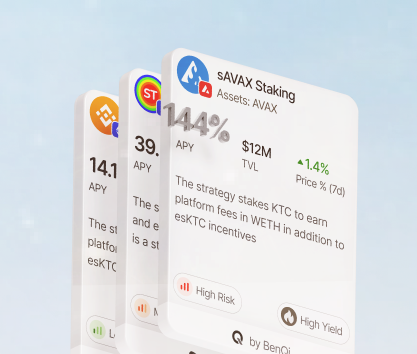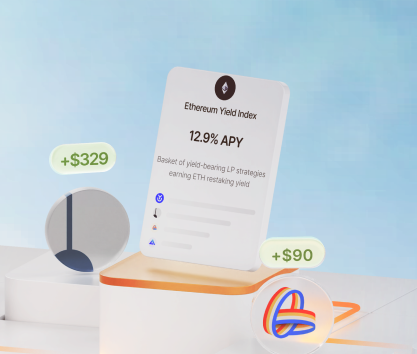Decentralization is one of the most important sociocultural trends of the recent decade as it shows the distinct desire among contemporary investors to venture outside of centralized ecosystems and invest in a wide range of financial instruments that have anti-inflationary mechanisms and can be used in many ways to bypass sanctions, restrictions, international borders, and other limiting factors of the current centralized global economy.
Another huge reason is that the reaction of the US government and many other nations to the 2008 financial crisis illustrated that the monetary system was rigged and broken with banks receiving free “get-out-of-jail” cards just because they were deemed too big to fail. In 2008, the US treasury used $700 billion of freshly printed banknotes to bail out several financial institutions. Throughout the last four years, the US government has spent over 24% of the national GDP to relieve the negative effects of the Covid-19 pandemic. In total, $894 billion was spent on stimulus packages.
The current rate of inflation in the US and EU propped by massive spending during the lockdowns causes CoL issues across the developed world and threatens to shake the very foundation of the monetary system. This uncontrollable spending and printing by the governments of the world is incredibly harmful
What is decentralized finance (DeFi)?
he idea behind blockchain-based cryptocurrencies is quite simple: everyone is aware of everything that is happening in the monetary ecosystem allowing participants to work in a transparent environment. Decentralized ledgers that add information only after transactions are approved by validators ensure that data is immutable with all operations forever etched into the digital network with data distributed among thousands or even millions of independently operated nodes.
This design effectively prevents uncontrollable printing of money or sudden influxes of cash out of nowhere. For example, Bitcoin is anti-inflationary by nature since there will be only 21 million coins making it an incredibly valuable long-term asset as scarcity will be a huge price-regulating factor. The existence of this particular protocol alone was not enough to support a new digital financial ecosystem since the counter-party risk remained a critical factor negatively affecting P2P trading.
The solution was to introduce decentralized exchanges (DEX) that would allow users to keep funds in self-custody while swapping assets directly with other wallet addresses or liquidity pools without worrying about counter-party risk. The trustless nature of the ecosystem is achieved through the use of smart contracts, tiny programs that automatically execute their instructions under certain circumstances.
Today, the DeFi sector has over 1,400 DEXes across over 30 chains tracked by multiple aggregators to ensure that they operate transparently. Many crypto investors believe that using these platforms is a good way to ensure that they are in control of their personal finances and can easily focus on making investment decisions instead of worrying about the integrity of the platform they use to trade.
Centralized exchanges are good choices for retail traders interested in strategies like market making, GRID trading, HFT systems, and more. With deeper liquidity, centralized custody, and quick on-platform swaps, CEXes offer a more convenient service compared to many DeFi protocols. Nevertheless, millions of contemporary investors are flocking to DEXes. Below are some reasons why.
- Privacy and anonymity. Many crypto enthusiasts believe that these features of blockchain ledgers are enough to make a decisive switch from CeFi to DeFi. Since many protocols do not have to follow KYC and AML practices, they do not collect sensitive information and provide equal service to all users regardless of their background and intentions. This freedom is hugely important to some users.
- Resistance to censorship is one of the most important advantages of decentralized trading platforms in crypto. Since the information is stored on distributed immutable ledgers, tampering with it becomes impossible without outlandishly heavy costs to the attacker. The desire to bypass sanctions and international restrictions using this quality and the anonymity of blockchain led to the 1,200% increase in DeFi adoption in Sub-Saharan Africa.
- Transparent development. Often, protocols are developed in an open-source environment with hundreds of developers providing insights, help with coding, consultations, audits, and more. Public smart contracts are especially useful as they can be audited to prevent critical vulnerabilities and exploits. Unfortunately, the industry is still struggling with QA and requires more time to mature in this regard.
- Users are in control of their finances. The big issue with centralized custody is that individual investors have to trust an organization that will be able to manage user funds properly and not tamper with them in any way. The catastrophic collapse of the FTX exchange scared so many users that the DeFi sector saw a dramatic increase in user activity right after the FTX case became public. In 2022, 50% of BTC holders used wallets with private keys controlled by owners which is an important milestone for the crypto industry.
The foundational design of blockchain ledgers makes it unnecessary for users to reveal and verify their identities to participate in the market in full capacity. The counterparty is non-existent thanks to smart contracts that execute transactions under specific conditions that may determine a wide range of parameters suitable for a trustless and permissionless operation between two or more wallets.
This design that does not require any middlemen also removes the necessity to identify users. The only vulnerability is the structure of the smart contract itself. When protocols build these programs securely and provide the necessary level of scrutiny during the QA phase, the safety is much higher compared to CeFi solutions. However, not all protocols employ external audits and run generous bug bounty programs.
These issues must be addressed with the highest level of responsibility and dedication on the part of development teams creating DeFi protocols. When it comes to DEXes, the smart contract design remains the biggest point of concern for investors as they have to manage their finances personally and often take on the full responsibility for the safety of their funds. A faulty smart contract can make it possible for hackers to attack users even if they follow the strictest security protocols.
This directly leads to privacy. In theory, it is possible to implement additional safety measures and even roll back some critical changes to networks through forking. However, privacy will have to be given up to ensure that funds are returned to users suffering from hacker attacks and other issues. This trade-off is one of the biggest problems in the world of blockchain. Solving the imbalance between performance, security, and privacy may turn to be an impossible task.
It does not mean, however, that decentralization is overtly dangerous or creates too many challenges for investors. Investors have to be more cautious and use all sorts of security techniques to ensure the safety of their funds.
Technological advantages of DEX
Using these platforms is quite effective for many crypto investors. There are several key benefits that stem from technological advancements in the DeFi sector. Let’s talk about some of the critical advantages of the blockchain technology when it is used to build DEXes.
- Better security. Decentralization and self-custody make sure that an ecosystem does not have a single point of failure which is a big issue for the CeFi sector where CEXes can suffer catastrophic security failures and lose outrageous sums of investor money. In 2014, the famous Mt. Gox BTC exchange lost 850K BTC.
- The blockchain technology is excellent for autonomous operations facilitated by smart contracts that can work without any human oversight. The absence of middlemen significantly reduces fees and comissions with some exchanges charging less than 0.1% per operation. While CEXes often charge up to 0.5% and even higher, a typical UniSwap fee is 0.3%.
- Automated transactions are possible thanks to the liquidity accumulated in special pools where investors can act as liquidity providers and receive rewards for their contributions. This design is an elegant solution that continues to prove its right to exist. Today, the combined TVL of all liquidity pools in the DeFi sector is over $18 billion indicating a high level of interest from the growing global audience of crypto investors.
Smart contracts in decentralized trading
DEXes can provide their services thanks to the existence of smart contracts that execute transactions when certain conditions are met. By writing code that allows to perform operations in a trustless and permossionless environment, developers can make transactions fast and easily verifiable even if two parties never interact with each other outside of the trade itself. To facilitate lower fees and higher throughput, protocols often use layer-2 scalability solutions like rollups.
Let’s discuss the importance of this concept and how it allows the DeFi ecosystem to operate reliably across dozens of blockchains.
How do decentralized exchanges (DEX) and smart contracts work?
A DEX platform is a protocol that offers liquidity pools where two exchangeable assets are allocated in a 1:1 value ratio. Users can swap assets within the pool by simply putting in a certain asset and receiving an equal amount of another asset in exchange. This setup allows investors to never lose control over their finances and make transactions using their wallets instead of transfering their assets under centralized custody.
Smart contracts are used to automate the process and make transaction fully autonomous. For example, many ERC-20 smart contracts have very simple architectures. They check the availability of funds in the wallet of an investor who wants to make a trade and calculates the amount of assets that should be transferred in exchange. The trade is done using simple formulas in one swift transaction that is often rolled up to make the final settlement cheaper.
The future of decentralized exchanges
DEXes facilitate low-cost trades between users in a trustless and permissionless environment making a truly decentralized economy more than possible. These services make international remittances and operations with financial instruments cheap and affordable effectively demoratizing finance. While user activity metrics have been wonky throughout the last three years, we are still seeing millions of users engaging with various decentralized platforms.
Additionally, investors can make money by investing in liquidity pools or staking various stablecoins and layer-1 digital assets in exchange for rewards. These incentives may prove to be sufficiently lucrative for capital holders to start adopting DEXes and other DeFi protocols more rapidly.









